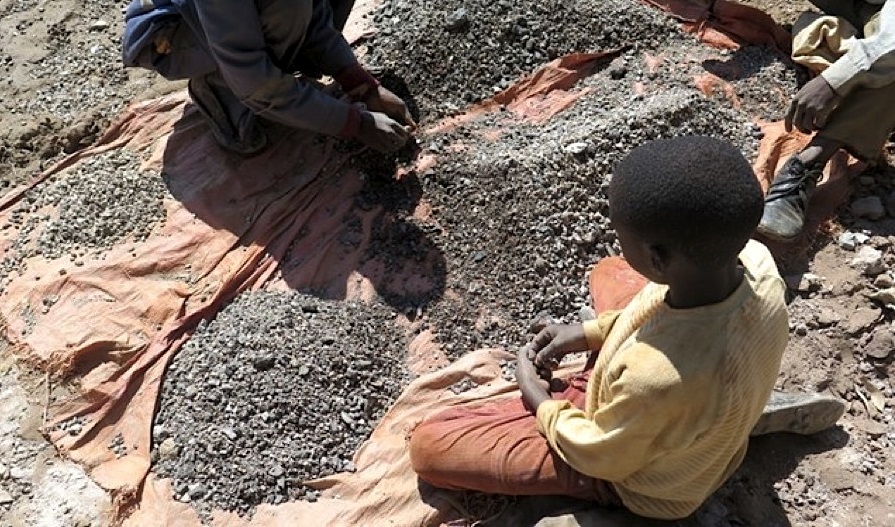Children are working in perilous conditions in the Democratic Republic of the Congo (DRC) to mine cobalt that ends up in smartphones, cars and computers sold to millions across the world. The Democratic Republic of the Congo contains vast and significant mining resources including more than 1100 minerals and precious metals. Despite the availability of these mineral resources, the country is experiencing endemic poverty. Its people live with highly unstable conditions, and children are forced to work in mines, exposed to all sorts of diseases and the possibility of accidental death, while the government and the mining companies that employ them look on in silence. Mining labor is harmful for children and certainly constitutes one of the worst forms of child labor. Article 32 of the Convention on the Rights of the Child is clear on this matter: “States Parties recognize the right of the child to be protected from economic exploitation and from performing any work that is likely to be hazardous or to interfere with the child’s education, or to be harmful to the child’s health or physical, mental, spiritual, moral or social development.”Numerous cobalt extraction companies in the DRC employ children as young as 7 years old to extract this mineral by hand or with rudimentary tools and no protective measures. According to a UNICEF estimate from 2014, roughly 40,000 young boys and girls are used for dangerous mining activities in southern DRC, primarily extracting cobalt.Child labor in the mines of the DRC is a terrible reality that must be exposed. In spite of various regulations governing mining as announced by the Congolese government and the 2009 law on child protections prohibiting the economic exploitation of children, no concrete or effective measures or policies have been made by the State to eradicate this problem.

The cobalt mines of the Democratic Republic of the Congo
e-Waste and child labour
The high increase in the usage of electronics devices, has caused a rise in the e-waste produced. Recycling of valuable elements contained in e-waste such as copper and gold has become a source of income mostly in the informal sector of developing or emerging industrialized countries. However, primitive recycling techniques such as burning cables for retaining the inherent copper expose both adult and child workers as well as their families to a range of hazardous substances. Children are especially vulnerable to the health risks that may result from e-waste exposure and, therefore, need more specific protection. Learn more about the journey of e-waste to developing countries by Greenpeace.
How can you help?
Know the electronic products you buy. Read this article to learn what major electronics companies are doing to combat child labor in their supply chain. Also recycle your electronics responsibly by following this guide.
Watch this video!
Electronics industry slave labour